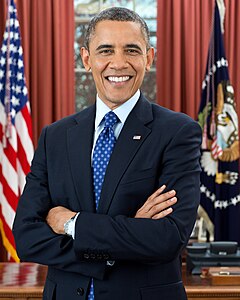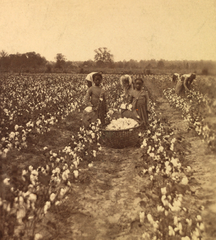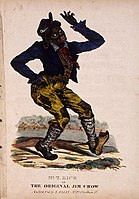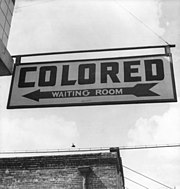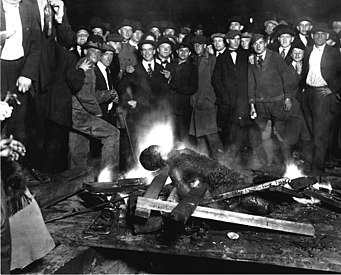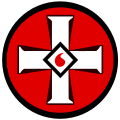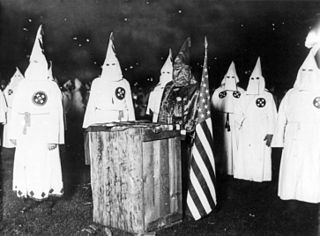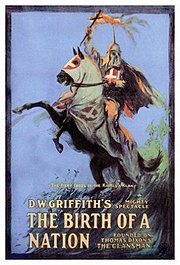Dieses Wiki, das alte(!) Projektwiki (projektwiki.zum.de)
wird demnächst gelöscht.
Bitte sichere Deine Inhalte zeitnah,
wenn Du sie weiter verwenden möchtest.
Gerne kannst Du natürlich weiterarbeiten
im neuen Projektwiki (projekte.zum.de).Discrimation of the black communities in the USA
Inhaltsverzeichnis |
History
The racism and discrimination of blacks in the USA basically began with the first african slaves and the domination of beliefs of "White supremacy".In 1492 Christopher Columbus landed with Africans in Puerto Rico and not much later in 1508 Ponce de Leon enslaved the indigenous Taínos in an area of the present USA. Africans were enslaved in a colony in an area of the contemporary South Carolina in 1526 at first. They mostly had to work at plantations. Soon many more black African came to America, in 1619 the first slaves came to Virginia. In 1641 Massachusetts were they legalized slavery for the first time. Several laws were adopted in the next years for instance laws arranging inheritance of slave status when a slave gets a child 1662 in Virginia or about the punishment of slaves in South Carolina in 1690. In the end of the 17th century the number of slave importations increased rapidly because of rice plantations were created in Carolina. In the next several years many riots, especially by slaves took place and more states adopted slavery laws. But in the last half of the 18th century many of the northern states declared that slavery is abolished - officially. In 1787 the Northwest Ordiance, the Northwest Territory, forbided the slavery. Still many people, especially blacks lived in slavery. For example in Pennsylvania there were no slaves in 1860 first. During the northern states abolished slavery for now, in the southern states the slavery was still legal and in 1822 in Mississippi a law was adopted that regulated the slavery and says that a master of slaves can treat them as animals. Only a few states forbade it as well. But when Abraham Lincoln were elected in 1860 he declared the Emancipation Proclamation in 1863, freeing all slaves and in 1865 the slavery was abolished completly in the constitution of the USA. But still the most African-American had to work as servant or slaves at plantations. When the Union Army of the Northern States promised freed slaves an amount of 40 acre of land when they would fight the southern states but that was annuled and many fell back into slavery again. The blacks got even poorer because of sharecroping, they had to pay rental o their masters and did not get much back from them. In total there were more than 10 million Africans which came to the English colonies as slaves. Even after the abolishment of slavery they were not equal to whites at all, not in the society and legally as well, for instance through the black code which made the blacks even more dependent to their former master. The government extended the right to vote and black men were allowed to vote, despite in the southern states. Still the majority were not able to do so, the blacks had to compete in a test, to see if they are able to read for example. When they were, they got asked questions about laws, which several whites were not able to answer as well. The racial segregation got legalised in the end of the 19th century by the most southern states. It was called "seperate but eqaul services". The blacks had their own sinks and toilets, own places in busses or own places in restaurants. Also there were only blacks and only whites schools. Later this ideology of racial inequality was established in the Jim Crow laws. Jim Crow was a figure to turn the blacks into ridicule. Soon this racism still was "embedded" in the socity especially by the church and government.Martin Luther King
Martin Luther King (born 15th January 1929 in Atlanta as Michael King Jr., died 4th of April 1968 in Memphis) was a Baptist minister and one of the most important black human rights activists of the 20th century. He is a Nobel Peace Prize laureate and fought against the racism in the US, he promoted a nonviolent way to fight for more civil rights and against the whites supremacy. He was killed at a protest march by a previously convicted white racist. Still he was one of the most influential activists.
Life
Fight for blacks rights
Ku-Klux-Klan
The Ku-Klux-Klan (short KKK) is a Protestant rascist and violent association from the USA. It was founded on the 24th of December in 1865 in Tennessee by six officers from the southern states, therefore it is the first terrorist group of America. These officers fought for the Confederacy in the American Civil War 1860/61. When they started with night rides with masks they began with their anti-black policy. Soon they gained many members from all over the southern states, their maximum number of members was even at 6,000,000. Nowadays it is at about 5,000 - 12,000. Against common stereotypes their main targets are not only blacks, they attacked Jews, immigrants and Catholics as well but they are also anti-LGBT. Common procedures and ceremonies is lynching, torture e.g. whipping or Cross burnings (since Grand Wizard William Joseph Simmons), also the well known white robes are their traditional wear to hide their identity[4].
History of KKK
The Ku Klux Klan emerged in aftermath of the Civil War 1860/61 and was founded in the Reconstruction in 1865 in Pulaski, Tennessee by six military veterans from the southern states. As the defeated of the Civil War one of their first goals was the sabotage of Reconstruction but soon they started with masked horserides at night and realized that blacks were afraid of them and the blacks became their main target, they wanted to maintain the "white supremacy". After the Emancipation Proclamation 1862 the Ku Klux Klan wanted to restore the "racial order" how it was before the Civil War [5]. They attacked many freed black slaves and gained more popularity after riots in the 1860s when white societies were formed to stand up against the abolishment of slavery. Later in 1867 they tried to create a hierarchy in Nashville but local KKK organisations were mostly independent. George Gordon, one of the first members and a former Confederate General wrote the KKK's first Prescript, in which he supported and highlighted their conviction in the "white supremacy". Their organisation was really chaotic at first, not structured, many local brands basically did their own things and did not follow the Prescript. According to historain Eric Foner the Ku Klux Klan was the military force for the Democratic Party, the planter class and the people who wanted to restore the white supremacy [6]. They started early with killing and supress blacks which voted for example. Some anti-KKK movements were formed and in 1871 Benjamin Franklin Butler wrote the Civil Right Act or the first "Ku Klux Klan Act" which were signed by the President Grant and when the Klan refused to dissolve their Klan severeal Clansman were arrested and reluctantly the Klan with about 550,000 members was abolished. Nevertheless many groups of white racists were formed until 1915 the second Klan was founded by William Joseph Simmons. The first Klan was gloryfied and romanticised, especially by the movie "The Birth of a Nation" by D. W. Griffith based on a book by Thomas Dixon Jr, who opposed eqaul right for blacks.KKK today and elsewhere
Today the KKK is not only one organisation but several groups in the US and even worldwide and in Germany and other european countries as well. It has estimatedly 5,000 to 12,000 members in the US. Their hate groups are on the rise in the last few years again. In Germany, the KKK exists since the begining of the 1920s in Germany, they are often related to right-wing extremist groups from modern Neo-Nazi groups, for example the NSU. There were about 4 Klans in 2012. Even some police officers should have been members of the german KKK[9]
Racism against black people in the USA today
Racism in the publicity
Further Reading and Web links
History of black people
- Article on the history of black america by the bpb (german): http://www.bpb.de/apuz/266269/zur-geschichte-von-black-america?p=all
- BBC documentary series about racism (three episodes): ep. 1: https://www.youtube.com/watch?v=R2Ofa_GMKJU&t=2942s / ep. 2: https://www.youtube.com/watch?v=8hNiuzX2u3E / ep. 3: https://www.youtube.com/watch?v=QSKQTu0ZV4k
- BBC videos on black people in America and their lives on plantations: https://www.bbc.co.uk/programmes/p00fcqv9/clips
Luther King
- Article about 50th anniversary of the speech "I have a dream" and the civil rights movement (bpb, german): http://www.bpb.de/politik/hintergrund-aktuell/167685/50-jahre-i-have-a-dream-27-08-2013
- Institue Web site about King by the Stanford University: https://kinginstitute.stanford.edu/
- Short video by "3Sat" on the death of Martin Luther King (german): https://www.zdf.de/kultur/kulturzeit/martin-luther-king-114.html
KKK
- KKK FBI-Files: https://archive.org/details/KKK-FBI
- "Die Arier", 2014: german documentary about right-wing extremism in Germany and other countries, http://www.bpb.de/mediathek/198266/die-arier (about USA and KKK from 00:46:20, Interview with a KKK-Member 1:13:10)
- Article on the KKK and list of KKK hate groups by the Southern Poverty Law Center (SPLC): https://www.splcenter.org/fighting-hate/extremist-files/ideology/ku-klux-klan
- Article on right-wing extremism in the USA by the BPB (german): http://www.bpb.de/politik/extremismus/rechtsextremismus/253409/rechtsextreme-us-szene
Racism today
- Hate Crimes data 2017 by the FBI: https://ucr.fbi.gov/hate-crime/2017/topic-pages/tables/table-1.xls
- The Counted by the Guardian, data about people killed by the police: https://www.theguardian.com/us-news/ng-interactive/2015/jun/01/the-counted-police-killings-us-database#
Sources
- Article on the history of black america by the bpb (german): http://www.bpb.de/apuz/266269/zur-geschichte-von-black-america?p=all
- Timeline South- and Centralamerica: https://amhistory.si.edu/vidal/timeline/
- Slavery Timeline by thirteen.org: https://www.thirteen.org/wnet/slavery/timeline/index.html
- Slave laws and slvaery in Sout Carolina: https://web.archive.org/web/20120302150227/http://www.slaveryinamerica.org/geography/slave_laws_SC.htm
- https://www.encyclopediavirginia.org/Runaway_Slaves_and_Servants_in_Colonial_Virginia
- BBC Documentaries about racism
- Article on right-wing extremism in the USA by the BPB: http://www.bpb.de/politik/extremismus/rechtsextremismus/253409/rechtsextreme-us-szene
- http://thekingcenter.org/about-dr-king/
- http://www.martin-luther-king-zentrum.de/mlkz/lebenslauf
- https://www.nobelprize.org/prizes/peace/1964/summary/
- https://kinginstitute.stanford.edu/encyclopedia/chronology?page=1
- Brandenburgische Landeszentrale für politische Bildung, Article on the KKK (german): https://www.politische-bildung-brandenburg.de/node/8755
- Roland G. Fryer, Jr., Steven D. Levitt: Hatred and Profits: Under the Hood of the Ku Klux Klan
- Ku Klux Klan: A History of Racism and Violence, 1997, by the SPLC via Google Books: https://books.google.de/books?id=To3kkDqNQdQC&pg=PA32&dq=ku+klux+klan+how+many+members&redir_esc=y&hl=de#v=onepage&q&f=true
- Article on the KKK in the twentieth century: https://www.georgiaencyclopedia.org/articles/history-archaeology/ku-klux-klan-twentieth-century
- "The Crisis", October 1940, page 324: https://books.google.de/books?id=7FoEAAAAMBAJ&pg=PA324&redir_esc=y#v=onepage&q&f=false
- Article by the ADL (Anti-Defamation League): https://web.archive.org/web/20121003050902/http://www.adl.org/learn/ext_us/kkk/
- https://web.archive.org/web/20120825005249/http://www.aaregistry.org/historic_events/view/ku-klux-klan-brief-biography
- Article on the KKK and list of KKK hate groups by SPLC: https://www.splcenter.org/fighting-hate/extremist-files/ideology/ku-klux-klan
- Article: "Life goes inside todays KKK": https://web.archive.org/web/20090427093003/http://www.life.com/image/85939265/in-gallery/25151/life-goes-inside-todays-kkk
References
- ↑ Research by the National Public Radio in corporation with the Harvard T.H. Chan School of Public Health, October 2017: https://www.npr.org/assets/img/2017/10/23/discriminationpoll-african-americans.pdf
- ↑ Article on the history of black america by the bpb (german): http://www.bpb.de/apuz/266269/zur-geschichte-von-black-america?p=all
- ↑ BBC documentary series about racism (three episodes), Epsipode 3, A savage legacy: https://www.youtube.com/watch?v=QSKQTu0ZV4k
- ↑ "Die Arier", 2014: german documentary about right-wing extremism in Germany and other countries, http://www.bpb.de/mediathek/198266/die-arier, Interview with KKK Member at 1:13:10
- ↑ Lewis, Michael; Serbu, Jacqueline: Kommemorating the Ku Klux Klan, from University of North Carolina and Wake Forest University: http://www.jimelwood.net/students/chiba/lewis_serbu_2008.pdf
- ↑ Foner, Eric: Reconstruction. America's Unfinished Revolution, 1988; p. 425/426: https://books.google.de/books?id=cwVkgrvctCcC&printsec=frontcover&dq=foner+reconstruction&hl=de&sa=X&ved=0ahUKEwjrpM2uwPfgAhXEKFAKHZJpADkQ6AEIKTAA#v=onepage&q&f=false
- ↑ https://web.archive.org/web/20140916012701/http://preachthecross.net/history-of-the-ku-klux-klan/
- ↑ Article on the KKK in the twentieth century: https://www.georgiaencyclopedia.org/articles/history-archaeology/ku-klux-klan-twentieth-century
- ↑ Brandenburgische Landeszentrale für politische Bildung, Article on the KKK (german): https://www.politische-bildung-brandenburg.de/node/8755
